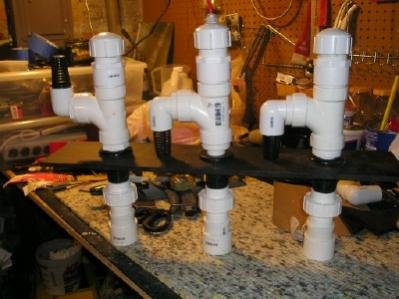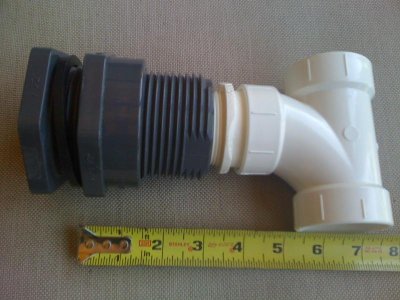Thanks for your input, but I have already purchased 1" bulkheads. I think I will go with an overflow the length of the tank, it makes building the overflow easier.
Anen:
Just found you earlier post - 1" will work, but I think you will find 1-1/2" bulkheads that are reduced to 1"fittings in the overflow will work great. As for the size of the overflow - remember that the longer the overflow the better it will surface skim the tank. I have one that I love that is the length of the right end of the tank ( 36") and because of how my flow is set up - it works pretty well.
As well - you don't have to use gate valves...let alone sch 80 ( We are not working with any pressures that even come close to what sch 40 is built for)
I have been perfectly happy with the sch 40 TUBV's ( True Union Ball Valves) from Lowe's or Home Depot.
And regular 90's will work - but let me just add this thought:
The best scenario has been lain out plainly by Bean. Anytime you choose to compromise that design you run the risk of being less satisfied with the results.
I usually find that if I cannot justify adhering to a given method in reefkeeping ( or anything else in life) then maybe it is not the right method for me.
Not trying to frustrate you- trying to help you prevent frustration:thumbsup:
T


